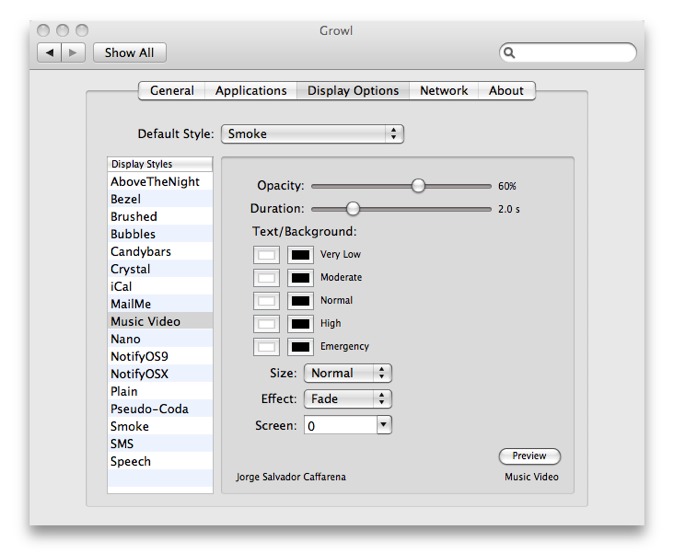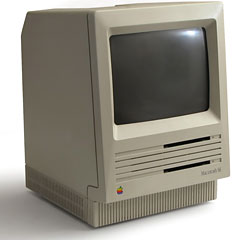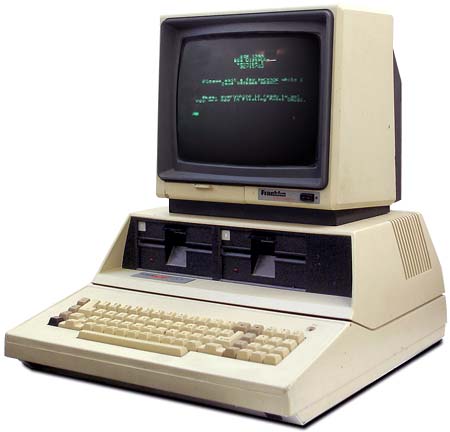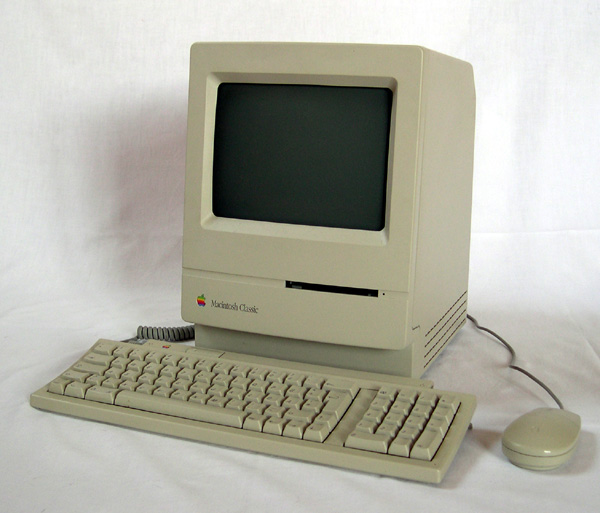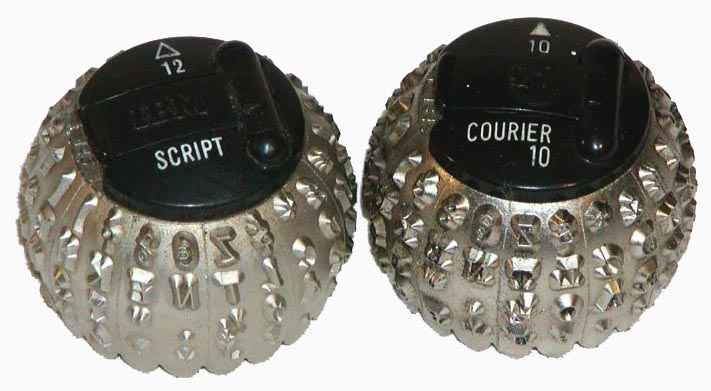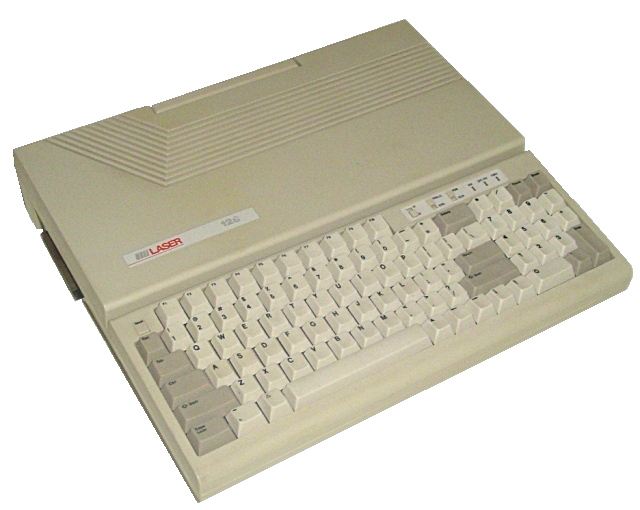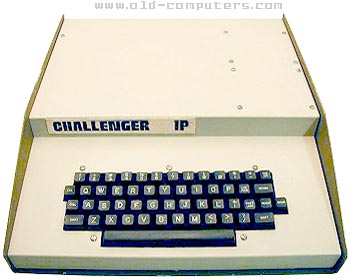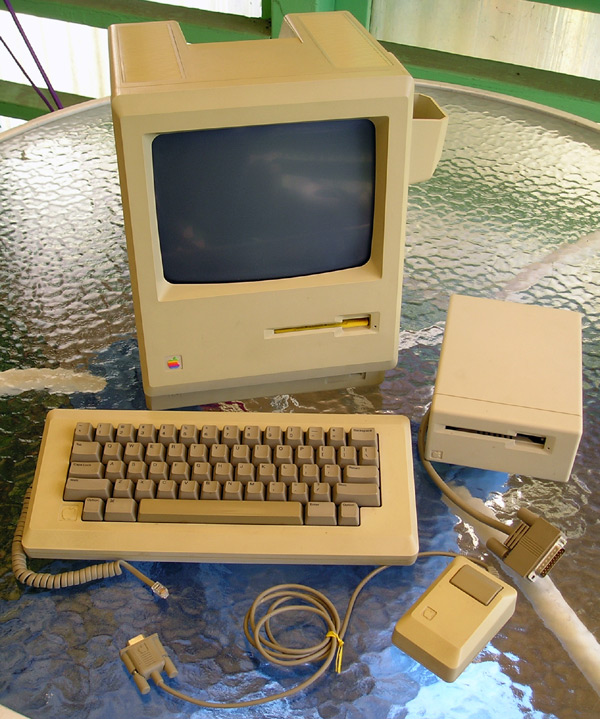TidBITS#962/26-Jan-09
What was the first Macintosh you owned? The computer for the rest of us turned 25, and although Apple isn’t marking the occasion, the TidBITS staff reminisces (for some, not very far) back to our first Macs, and Adam explains his potentially controversial choice for the best Mac ever. This week also brings some significant business news, starting with Apple’s best financial quarter thanks to $10.2 billion in revenue. Microsoft, however, announced layoffs – but as Glenn Fleishman points out, the numbers may not be as bad as reported. Glenn also notes that the SEC may be investigating Apple and Steve Jobs over how Jobs’s health issues have been disclosed to shareholders. In other news, Apple quietly updates the low-end white MacBook, Doug McLean roars about Growl, and Adam comments on why people affected by malicious Trojans in illegally downloaded copies of iWork ’09 and Photoshop CS4 really shouldn’t be surprised. In the TidBITS Watchlist, we note the releases of Default Folder X 4.1.1, QuickTime 7.6, Mellel 2.6, and Sandvox 1.5.4.
SEC Reportedly Investigates Apple over CEO Health
Before the close of trading on 21-Jan-09, the Wall Street Journal reported (using an anonymous source) that the SEC had opened an investigation into how Apple had disclosed information related to Steve Jobs’s health. Jobs, currently on leave from the company except for major strategic decisions until June 2009, has made a number of brief statements about his health over the last several months. (See “Steve Jobs Takes Medical Leave Until June,” 01-14-2009.)
Publicly traded companies are required to disclose matters that have a material effect on a company’s performance, which could include a CEO who was unable to perform as expected. The SEC typically only discloses their investigations when a settlement is made, fines imposed, or prosecution intended.
Apple Quietly Improves Low-End MacBook
The low-end MacBook, the white 13-inch polycarbonate model that remained in Apple’s laptop lineup at $999 when the company introduced a new unibody aluminum model in October 2008 (see “Updated MacBook Design Gets Metal and Glass”, 2008-10-14), is now an even better deal. Without any fanfare, the company has quietly begun shipping a revised MacBook that features more memory, more-advanced Nvidia graphics, and a faster frontside bus, without giving up the low price or the FireWire 400 port that keeps many users interested in the model.
Likely of most interest to prospective buyers will be the performance boost the low-end MacBook now gets from the combination of the Nvidia GeForce 9400M graphics processor (replacing the Intel GMA X3100 GPU of earlier 13-inch MacBooks) that also appears in the newer aluminum MacBooks, and a boost in the logic board’s frontside bus speed from 866 MHz to 1066 MHz. Oddly, the upgraded model also loses a little processor speed, dropping from a 2.1 GHz Intel Core 2 Duo processor to a 2.0 GHz Core 2 Duo. We suspect the net result will still be a faster machine.
At the same time, Apple has increased the $999 model’s base memory to 2 GB (upgradable to 4 GB), and now offers not only the previously available 120 GB, 160 GB, and 250 GB hard drives, but also a 320 GB hard drive for $225 more than the base model. The white MacBook retains its Mini-DVI port, which supports adapters to DVI or VGA, but can’t drive Apple’s 30-inch Cinema Display, which requires dual-link DVI. By comparison, the aluminum MacBook model features the newer Mini DisplayPort, supporting DVI, VGA, and dual-link DVI with appropriate adapters.
The FireWire 400 port remains the biggest technical difference between the white MacBook (which has one) and the unibody aluminum MacBook model (which has none). The absence of a FireWire port from the aluminum MacBook model (though the MacBook Pro features a backward-compatible FireWire 800 port) was the subject of much consternation among users who felt they’d miss FireWire Target Disk Mode and compatibility with FireWire-based digital video camcorders, FireWire external hard drives, and other devices (see “On the Way Out: FireWire and Matte Screens?”, 2008-10-18).
Apple Posts $10.2 Billion Revenue for Q1 2009
Despite the poor state of the economy, Apple has good news for its latest quarter of results. The computer company hit $10.2 billion in revenue and $1.6 billion in profit, and sold oodles of products: 4.4 million iPhones, 22.7 million iPods, and 2.5 million Macs in the quarter ending 27-Dec-08 (the second highest number in Apple’s history for Mac sales). Revenue was up slightly over the same quarter in 2008, which saw $9.6 billion in revenue (see “Apple Beats Earnings Records with Q1 2008 Results,” 2008-01-22); sales of Macs were up 9 percent in the same period, iPods up 3 percent, and iPhones up 88 percent.
The company ended the quarter with about $28 billion in cash, cash equivalents, and marketable securities as part of $35 billion in a variety of current assets. On the downside of the ledger, Apple owes or has to count as a liability about $15 billion in bills to pay, expenses they’ve incurred, or revenue they deferred.
The numbers above are the official figures using GAAP (Generally Accepted Accounting Principles). Apple now also releases a separate set of “adjusted sales” and “adjusted net income” reports that deal with how they account for revenue from iPhones on a subscription basis over two years. The adjusted sales figure was $11.8 billion for the quarter, while adjusted net income was $2.3 billion. This is a closer representation of actual dollars taken in and net dollars retained. This accounting was designed to cushion the flow of revenue from the devices and allow zero-cost software upgrades, in contrast with the iPod touch, which has its revenue realized when sold (which is why major system software updates for the iPod touch require a
fee).
With the normal slowing in sales following the holiday quarter, Apple is still projecting fairly robust sales of $7.6 to $8 billion in the current fiscal quarter.
Apple said it sold a cumulative total of 13.7 million iPhones in 2008, and has sold a total of 17 million, which is far ahead of the 10 million units figure that Apple projected back in 2007. Passing 10 million units sold seemed unlikely until mid-2008 when Apple introduced the iPhone 3G. Apple now sells iPhones in over 70 countries.
Despite the high level of sales, which puts Apple up against Research in Motion BlackBerry phones in the United States, acting company head Tim Cook said during a conference call with analysts, “Our objective is not to be the unit-share leader in the industry. Our objective is to build the world’s best phone.”
Cook also emphasized that there’s a bit of buy-in by developers writing software for the iPhone. “We approached this as a software business,” he said, which differentiates the iPhone for third-party developers from products like the Android platform used by the T-Mobile G1 or the Palm Pre (not yet released).
Cook also fired a shot across the bow, noting that competition was good, but only, “as long as they don’t rip off our IP,” referring to “intellectual property” such as patented ideas. “We will not stand for having our IP ripped off and we’ll use any weapons we have at our disposal,” Cook said. While he wouldn’t single out any particular company, it’s possible this was meant as a warning to Palm. (The Palm Pre project is run by former Apple hardware engineering chief Jon Rubenstein.)
Apple Stores continue to drive traffic in huge numbers, with 46.7 million visitors in the last quarter alone, or 14,400 visitors per week in each store on average. The company expects to open about 25 new stores this year adding to 251 stores open in 10 countries today.
Cook was clear on Apple’s future in the netbook category, one that’s been on fire as tiny laptops with decent capabilities have captured what Cook said was 3 percent of the PC market. Cook reiterated a point made by Steve Jobs in the previous quarter’s earnings call with some additional detail: netbooks are underpowered and lack the quality that Apple wants to put in its devices. “We think the products are inferior,” Cook said, though he noted that Apple is still watching the category.
Cook offered no new information about Mac OS X 10.6 Snow Leopard, which Apple said last year would be available somewhere in the middle of 2009.
Unsurprisingly, the first question of the conference call was about Steve Jobs’s health: “How is Steve?” Without actually answering the question, Cook responded at length, with a fluency that indicated he was certainly prepared for the question: “There is an extraordinary breadth and depth and tenure among Apple’s executive team. And these executives lead over 35,000 employees that I would all call wicked smart. And that’s in all areas of the company: in engineering, marketing, operations, sales, and all the rest. And the values of the company are extremely well-entrenched. We believe we’re on the face of the Earth to make great products, and that’s not changing.”
Microsoft Plans Shift in Business, Thousands of Layoffs
As expected, Microsoft announced layoffs last week, a rare event in the company’s history. The actual scale – 5,000 Microsoft employees and as many as 5,000 contractors – seems to have shocked analysts and reporters so much that they ignored a few salient facts.
Microsoft shed 1,500 employees at the time of the announcement and plans to lay off 3,500 more over the next 18 months. But, during the same period, CEO Steve Ballmer said in a staff memo the company will add 2,000 to 3,000 new positions for its new initiatives, many of which are focused on cloud computing, applications that run in a distributed fashion over the Internet instead of being housed on individual personal computers or servers.
Even more specifically, insiders are claiming that the majority of the first cuts are in the Xbox, Zune, and Windows Mobile divisions of the company, according to veteran Microsoft reporter Mary-Jo Foley.
We have no word yet at TidBITS as to whether any Macintosh Business Unit staff have been let go. The MacBU develops core business and communications software for Mac OS X, such as the Office suite.
It’s well known in the Seattle area that Microsoft has a penchant for hiring and no talent for firing. Very few people are involuntarily separated from the company headquartered in Redmond, WA, even after they’ve committed egregious blunders or exhibited total and complete incompetence. (Theft is another matter.)
As a result, Microsoft employs a lot of people that don’t contribute directly to the company’s bottom line. The areas that Ballmer said would be cut were largely support staff: IT, human resources, marketing, and so forth, rather than the muscle and sinew of the company, its core programming efforts.
It’s never a good day to lose one’s job, and one hopes that the most competent and able folks will be able to shift within the company to the new positions opening up.
And, by the way, Microsoft made $4.2 billion dollars on $16.6 billion in revenue in the last quarter, and has $20 billion in the bank. These moves are expected to save them $1.5 billion a year in expense and $700 million in capital spending.
Yet Another Reason Not to Pirate Software
I’ve been laid up in bed following a hernia repair operation last Wednesday (feeling better, thanks!), and while that’s undoubtedly making me crankier than normal, I’m having trouble mustering any sympathy for the people who downloaded pirated copies of iWork ’09 and Photoshop CS4 and had their Macs turned into zombies participating in distributed denial of service attacks. Yeah, it sucks that those people are going to have to go to some effort to wrest back control of their Macs (for safety’s sake, I recommend absolution of a clean install of Mac OS X and applications, moving
only documents and settings over) but let’s face it, anyone downloading this software was trying to get something for nothing. Oh, I know, it seems that copying software illegally is a victimless crime, but it’s now painfully clear that doing so also attaches a big “Practices Unsafe Hex!” sign to your back. Perhaps software piracy isn’t so victimless after all.
We’ve been saying for a long time that responsible computing practices include avoiding untrustworthy sites and, especially, not downloading software from such sites. For the most part, we were thinking about the usual gambling, porn, and get-rich-quick sites that attempt to prey on our baser instincts. But with (unverified) claims that as many as 20,000 people downloaded the pirated version of iWork ’09, perhaps we’ve been remiss in not stating the obvious. The kind of people who post pirated software aren’t necessarily the sort of people you want installing software on your Mac. And that’s just what you do when you download pirated software – you invite someone who’s intent on ripping off Apple or Adobe to do what they want with your
machine.
So let’s not pretend that this Trojan Horse situation is in any way a normal security exploit or that people who suffered from it didn’t know that they were doing something wrong. They may not have known that their Macs would be dragooned into a denial of service attack, but they certainly knew they were doing something wrong. Not to get all preachy, but in this sort of situation, virtue offers not just its own reward, but also the reward of keeping your Mac safe from unsavory elements.
Growl Offers System-Wide Notifications
Multitaskers, which nowadays includes almost everyone, are frequently presented with an annoying problem under Mac OS X: application notification dialogs popping up and stealing your time and mental focus. Granted, sometimes we’re interested in the information these notifications contain, such as when there’s an unusual error or a software update becomes available, but often the moments and means these notifications choose are not ideal. While the time and attention it takes to close a dialog or make an icon stop bouncing on the Dock is slight, momentary distractions add up (see “Minimize Desktop Distractions,” 2008-12-04). What’s needed is a piece of software that can mediate
non-critical alerts from applications, giving us better control over how and when we see them. Thankfully, the free and open-source Growl does just that.
While Growl has been around since 2004, many people aren’t aware of it – I just found out about it this fall when Adam introduced it to me as a must-have. Growl is system-wide notification software that presents application alerts according to your custom specifications. It comes with 17 standard notification styles, 14 of which are visual styles ranging from screen-length transparent bars to chat bubbles. The remaining three standard options are audio, email, and SMS notifications. Additional styles, including SpongeBob SquarePants and a Vanna White lookalike alert, are available for download from the Growl Web site.
Growl enables users to determine where alerts appear on screen, how long they remain visible, and other visual style preferences such as text size, bubble transparency, and text/background colors. Users can also designate priority levels, and enable “sticky” notifications that remain on-screen until clicked. Also, notification styles and settings can be adjusted for each program taking advantage of Growl. For example, Firefox could be set to sticky Music Video style alerts that appear at the top of the screen, while Safari could be set to display Smoke style alerts at the bottom of the screen that disappear after 5 seconds.
Unfortunately, Growl can’t take over the notification tasks of just any program because it doesn’t actively seek and collect information; it waits for other programs to post notifications to Growl. If you do have a program that supports Growl, it automatically appears under the Applications list in Growl’s preferences. Otherwise, there’s nothing you can do to add it.
Users can also configure exactly which notifications from each program are enabled and how they appear. For instance, Skype can notify you of every new chat message you receive, but that’s ridiculous if you’re actually maintaining a chat, since you see each message in the chat window and then again via Growl. While there could be a use for that sort of duplication if you were merely monitoring a chat while using another application, in most cases it makes more sense to turn off Skype’s notification of new chat messages. Even worse is the Contact Is Typing notification – it’s hard to imagine a reason why you’d want to be notified every time your chat partners were typing.
Growl also possesses network capabilities that enable notifications to be sent from one computer to another. So, if you were sitting on the couch with your laptop waiting for a download to finish on a Mac in the other room, Growl could alert you when it’s done without your having to get up and check.
The list of programs that are compatible with Growl is fairly substantial; those that do not directly support Growl might work with third party utilities that can. For example, iTunes does not directly support Growl, but can be convinced to work with Growl via GrowlTunes, Quicksilver, and Synergy Classic, which in turn communicate with Growl. Similarly, GrowlMail enables Mail to work with Growl, and GrowlSafari mediates between Safari and Growl. GrowlTunes, GrowlMail, and GrowlSafari are all included with Growl under the Extras folder. Growl can also notify users of hardware changes via HardwareGrowler, also included in the
download package. HardwareGrowler notifies users of physical environment changes to their computer, such as when devices are connected or disconnected.
OmniGrowl ($10) from Wooden Brain Concepts works with a host of previously unsupported programs and services such as iCal and Address Book events, traffic reports, RSS headlines, and more. A handy plug-in for Gmail users is Waffle Software’s Google + Growl, which establishes communication between Growl and Google Notifier, a program that enables users to check Gmail and Google Calendar without opening a Web browser.
Growl appears to be steadily gathering support from application developers. As Growl’s list of compatible applications and third party plug-ins expands, this handy tool inches closer to truly becoming a system-wide notification system, though I’d be shocked if Apple ever actually integrated it into Mac OS X. I highly recommend checking out Growl, and if you like it, encouraging companies whose programs you use to add Growl support.
The Mac Turns 25: Best Mac Ever?
When my friends at Macworld called and asked me to contribute to their 25th anniversary issue, I jumped at the chance. Steve Jobs is so uninterested in the past that he had Apple’s famous icon garden not only ripped out, but junked. I, on the other hand, find it instructive to pay attention to the past because it both informs where we are today and, hopefully, enables us to avoid repeating our mistakes.
So when asked the question of what the best Mac of all time is, I didn’t have to think too hard – it’s the Macintosh SE/30. Despite Andy Ihnatko’s sage comment that one’s favorite Mac is one’s first Mac, the SE/30 was only my first Mac on the outside – it started life as an SE that Tonya and I later upgraded to an SE/30 with a motherboard swap in 1990.
My choice, shared by stalwarts John Gruber and John Siracusa, was not based on the fact that the SE/30 can in any way compete with a modern Mac, which Charlie Sorrel seemed to think was relevant on Wired’s Gadget Lab blog. It’s painfully obvious that the SE/30 has nothing on any modern Mac. If the best Mac ever was simply the most powerful, it would merely be a competition between Apple’s current models, and it would change as soon as a new Mac came out. Boring.
No, the SE/30 gets my nod as the best Mac ever for more subtle reasons.
- It offered, for the time, an amazing combination of power, small size, and expandability, thanks to its 68030 processor and PDS expansion slot. It wasn’t the first to be that fast or the most expandable – both of those awards went to the Macintosh IIx – but it opened our eyes to the possibility that we could have a small Mac that made no compromises. The next Mac to do that for me was the PowerBook 100, which might be my runner-up for best Mac ever, thanks to what it showed was possible in a portable form factor.
- That expansion slot was key, because it made multiple monitors an obvious and financially realistic option for many people. An SE/30 with a video card and an external monitor was a lot cheaper than a Macintosh IIx with two video cards and two monitors. Attaching a second monitor is one of the easiest ways to increase productivity to this day, something that New York Times writers noted back in 2006 and again just a few weeks ago. Since that SE/30, every one of my main Macs has had multiple monitors attached.
- Even after I stopped using the SE/30 as my main Mac, the expansion slot kept it useful, since I was able to install an Ethernet card and use the SE/30 for various Web and mailing list server duties until 2001. Sure, a new Mac could have performed the SE/30’s tasks without difficulty, but I didn’t have to buy one for that purpose, because the SE/30 remained useful for over a decade, running continuously updated software the entire time. No other Mac I’ve owned has had such a lifespan, and with Apple ever more focused on getting us to upgrade frequently, I doubt any Mac will enjoy such longevity again.
In short then, the SE/30 was a great package that offered a glimpse of what the Macintosh could be in the future and then stuck around to watch that future come to life around it. And that’s why I keep my SE/30 around to this day in a bookshelf, where it can see the new Macs that trundle in and out of our offices and remind us of where we started.
The Mac Turns 25: Our First Macs
The Macintosh turned 25 this week, and in honor of the event, we’re all taking a moment to dig back into the depths of time and share a few thoughts about our first Macs.
Adam & Tonya: Macintosh SE — Tonya and I bought our first Mac in the summer of 1988, which required a little finagling, since although we were students at Cornell University at the time, we weren’t enrolled in summer classes, thus making us ineligible for the student discount until the semester started. Undaunted, we convinced a friend to put her name on the paperwork, plunked down our money, and brought home a double-floppy Macintosh SE. We weren’t new to the Mac at that time, since both of us had worked in Cornell’s public computer rooms, but having a Mac in our apartment made it easier for Tonya to write papers and for me to work on my senior honors
thesis in a wildly pre-release version of the Storyspace hypertext editor (still being sold by Eastgate Systems). Apart from site-licensed programs like WriteNow, I remember buying QuicKeys and Suitcase right away to outfit our new Mac.
I had, somewhat earlier, built a hard drive for my Atari 1040ST (which had replaced my first computer, a Franklin ACE 1000, which was an Apple ][ clone) from a Seagate 30 MB mechanism, a SCSI controller board, and a massive case that could support up to five full-height drives. All I had to do to move that hard drive over to the SE was build a new cable to plug into the Mac’s SCSI port, but unfortunately I had no electronics gear to test my wiring. Once again undaunted, I ran wires from the cable through a battery-powered squirt gun to test continuity. My tests worked, the drive worked, and we were up and
running.
We used the SE for a year or so, but after graduation, when the SE/30 upgrade came out, we jumped at the chance to move up, adding a video card and an Apple 13-inch RGB monitor to the mix and turning the humble SE into a veritable tower of power for its era. We still have that SE/30 in a bookshelf, reminding us of what the world of the Macintosh was like back in the early 1990s (see “The Mac Turns 25: Best Mac Ever?”, 2009-01-26).
Joe: Macintosh SE — During graduate school at the University of Texas at Arlington, I had a conversion experience of sorts: I got enough of a taste of Macs in the school’s computer lab that I realized I could never again own a PC. Although I’d found much to like about Macs, the deciding factor was, without a doubt, Nisus. I tried a demo version of this unusual multilingual word processor on a Mac Plus at school and with every cascading submenu I just drooled more. Nothing in the PC world could touch it, and since I was studying linguistics, the program’s superb support for non-Roman languages made the decision that much easier.
There was just one problem: As a starving student, I couldn’t afford the cheapest new Mac available at the time, which was early 1991. In fact, even a used SE/30 – a model discontinued the previous year – cost a couple thousand dollars more than I had. But knowing that I’d find some way to get a Mac as soon as possible, I went ahead and ordered a copy of Nisus before I graduated so that I could use my student discount – even though I had nothing to run it on.
If I’d been able to afford it, I would have bought a Mac Portable, which at the time seemed to me the sexiest computer imaginable. Instead, that summer I spent (as I recall) about $500 on a used Mac SE with a 20 MB hard drive, and another $100 or so to max out the RAM to 4 MB. That fall, I added a new StyleWriter printer for output and a Global Village ADB modem for connectivity.
During the time I owned the SE, I spent more than I’d originally paid for it replacing a busted logic board and a faulty hard drive. But it was still my beloved first Mac. I gave it to a family member a couple of years later when I made a major leap forward to my next Mac, a Centris 610.
Jeff: Macintosh Classic — I’m going to start a little further back in time, fully cognizant that I can’t seriously compete with some of my colleagues in the “first-computer used” category. The first computer I owned was a Commodore VIC-20, which was fairly soon replaced by the unbridled power of a Commodore 64. In high school I lobbied the newspaper’s journalism adviser to jump into the digital age with a set of C64s, but she’d (smartly) already decided on getting a Mac Plus, with a few Mac SEs arriving the following year.
Although I took that Commodore 64 to college, it was by then just a word processor from which I could print papers; the Mac had become the be-all, end-all computer for me. Working on the high school paper taught me how to do layout (and swap floppies) in PageMaker 1.0, write in Microsoft Word, and play a mean game of Solitaire. As a college freshman, I was the only staffer who knew how to use the newspaper’s new Macs. But I had no money to buy my own; on deadline, I’d often beg a friend in the freshman girl’s dorm to let me write my articles on her Mac SE.
Finally, as a sophomore, I took advantage of the student discount to buy a Macintosh Classic, along with a case to carry it in (of course!), which I’d frequently sling over my shoulder and then bike to the newspaper office for weekly late-night production deadlines. I would have loved to own one of the new PowerBooks (eventually I bought a used PowerBook 100, one of my favorite machines), but the price was prohibitive.
Matt: Macintosh LC — As a programmer, I’d been working with computers since 1968, but as a Classics professor in the early 1980s, my immediate problem was typing Ancient Greek, or, more precisely, typing both English and Greek in the same document. I had an IBM Selectric typewriter with interchangeable typeballs, and later an Olivetti electronic typewriter that used interchangeable typewheels and had a tiny “memory” so that it was almost a miniature word processor. But the real solution was a personal computer: I got an Apple ][c clone called a Laser 128. This, together with an ImageWriter and a wonderful (now defunct) program called Gutenberg, gave me a full-featured word processor with the ability to alternate English and Greek letters at will.
While teaching at Cornell University in the late 1980s, I met Adam, who taught me to use the Macs in the computer labs; I remember us performing some clever tricks with Microsoft Word and QuicKeys (and swapping a lot of floppy disks). But the Mac still felt like a toy to me, and I didn’t actually want one.
Then, in 1990, I arrived at Swarthmore College and found that, like every professor, I was given an office Mac. It was one of those early squat all-in-one machines with a tiny monochrome screen – probably either a Plus or an SE. Naturally, since it was right there on my desk and hooked into something called the “Internet,” I started playing with it constantly. (Oh, the INITs! Oh, the bombs!)
But what turned me into a Mac person wasn’t the machine so much as the killer apps I got for it. Nisus, a fantastic word processor with amazing search-and-replace and macro features, along with LaserGreek, a gorgeous Ancient Greek font, allowed me to do all my multilingual scholarly writing. And HyperCard 2 made the Mac interface itself programmable, letting me create an Ancient Greek language lab for my students. By the end of that school year, I was a Mac convert, the proud owner of a brand new pizza-box Macintosh LC which,
together with a StyleWriter printer, remained my workhorse machine for many years.
Glenn: Macintosh Plus — The first computer I programmed on was a Commodore PET, and the first PC I owned was an Ohio Scientific Challenger 1P. I taught myself machine-code programming on the C1P, and copyrighted a tape-based software loading program I wrote. My folks bought me the $333 computer, and then saw little of me outside my room for months.
The 1P stood for one port, which was an unpopulated RS-232C port into which you could stick some components, solder them to an optional connector, and run a 110-baud modem. An easter egg in the boot firmware let you enter the character “L” and be told that the built-in 8K BASIC was written by Micro Soft and Bill Gates. (Who the hell was Bill Gates?)
Like the Apple ][, the PET and C1P all used the famous 6502 microprocessor. By the time I went to college, I’d upgraded to a Commodore 64, which used a similar processor.
I started using a 512K Mac during my last year in high school, where I was the school newspaper’s typesetter. We had some aging phototypesetting gear that allowed me to set one justified line at a time onto a thin photosensitive paper that could be developed and waxed to be cut and put down on boards for layout.
My marvelous journalism teacher let me take the newspaper’s first Mac home over winter holidays in 1985 so that I could learn PageMaker 1.0, and come back ready to typeset and teach others. I was completely blown away. This experience likely led to my decision to major in art with a concentration in graphic design when I started college the following fall.
I took my Commodore 64 to school to write papers, like Jeff. But I was yearning for a Mac once the Macintosh Plus had been out for months with a whopping 1 MB of RAM. My grandparents on my father’s side offered to buy me a Mac sophomore year, which I believe cost about $1,200 with the student discount.
My roommate, Ethan Robey, and I agreed to split the cost of a fancy dot-matrix printer. But we somehow managed to order the wrong item. After weeks of waiting, an ImageWriter II in the wide-carriage, pin-fed paper version arrived! We couldn’t return it, and we’d spent much more than we needed to. Ah, well. The upside is that it could handle normal and pin-fed continuous paper, of which a large supply was available for the, uh…”borrowing.” It wasn’t being used much by that point.
Now, this Macintosh Plus wasn’t a passing fancy: I spent many a year swapping sets of 800K floppies with that puppy. Sometime during my senior year (1989-1990), I got a case-cracking kit so I could upgrade RAM myself. The campus computer store wanted some truly insane amount of money to upgrade from 1 to 4 MB – $750, perhaps?
The kit was a very long hex wrench, to remove two tiny and hard-to-get-at screws at the top of the case; a spring-loaded clip that you would insert into the seam of the Mac and gradually ease open; and a grounding strap to avoid zapping internal components.
That spring, I was able to barely afford a 60 MB Ehman external hard drive, the only affordable drive at that time, and my floppy-swapping days were over.
Like Jeff, I used to haul this Mac around in a special case. It would fit only in the middle seat of an airplane. I grew up in Oregon and went to college in Connecticut. I sat in a lot of middle seats.
I wound up getting about 4 years of use out of that Mac, finally selling it to a friend. He moved to Brooklyn where, when he was out of the house he shared with a number of other people, a pipe burst in the basement, pouring water all over the Mac. Roommates unplugged the computer (which was off), dried it out, and it kept working for a while after that.
My next machine was enormously more advanced: a Macintosh IIcx. And, in 1991, I took a job at the Kodak Center for Creative Imaging, where I was responsible for 100 Macintosh IIfxs – curse you, Jean-Louis Gassee! – and had a Macintosh Portable of my very own.
Rich: Mac mini — Since I’m truly frightened Adam will physically eject me from the TidBITS staff once I reveal my first Mac, I’m going to distract you by talking about the first Apple products I used, as opposed to owned.
Similar to Glenn, I started programming in elementary school on a Commodore PET, where I’d show off by switching it to binary mode to demonstrate binary addition (both the beginning and end of my education in binary). Fairly early on my best friend’s parents bought an Apple ][ for his family, and the two of us quickly monopolized it for a mix of games and programming. I can’t count the hours we spent playing Wizardry and designing education software we planned on selling back to our school, thereby allowing us to retire before the eighth grade. During these same years we also toyed with programming BASIC on an Atari 2600 using a small hand controller (no, you couldn’t even save your programs).
The first computer I owned was a Commodore 64, and my friend and I would shift between his home and mine depending on whether we were in the mood for Apple or Commodore. In 1984 our school obtained two original Macs, and I remember reveling in correcting people who referred to the plastic-encased floppy disks as “hard drives” (ensuring I would later never get a date in my home town).
I shipped off to the University of Colorado with the Commodore 128 that I’d promised my parents would get me through all four years (which would eventually became eight years, and require a few additional computers along the way). While in school I used a variety of Macs for layout and publishing, but used mostly PCs for class work. Much of this wasn’t by choice – I’d spend hours drooling over the various Macs and eventually NeXT systems at our local student bookstore. By the time I could finally afford one, I had started my career in IT, with a side business of building PCs, and Macs faded to my past.
But then a strange thing happened. Steve Jobs returned to Apple and the company produced a string of beautiful machines with a new, Unix-based operating system. I was intrigued, and finally invested in a first generation Mac mini for research purposes. Despite being woefully underpowered compared to my home and work PCs, it quickly became my primary system when I wasn’t traveling.
Then the Intel transition was announced, and I pre-ordered one of the first MacBook Pros off the assembly line. I virtualized my work computer, totally against policy, and have been all Mac ever since. In the process I’ve racked up two MacBook Pros, a MacBook for my wife (after banning PCs from the house), five iPods, two iPhones, multiple AirPort Express and Extreme units, and a one very loud Xserve sitting in my closet. I’ve also converted my entire side of the family, and am working on my in-laws.
Hopefully my exuberance makes up for my tardiness.
Mark: Macintosh 512K — I’m a little surprised to discover mine was the earliest Mac purchase of this august group, but after several years of light programming experimentation on a Prime minicomputer at my mom’s office, Commodore PETs, TRS-80s, and Apple ][s at school, and an Atari 400 at home, I bought Apple’s second Macintosh model – the Macintosh 512K – soon after I got to Cornell to use in my Computer Science programming classes. (It was even Friday the 13th, which turned out to be pretty lucky for me.)
That first Mac, with its 9-inch black-and-white screen, saw me through about three years of college, enjoying upgrades first to a Macintosh 512Ke (enjoying new ROMs and support for 800K floppy drives instead of the original 400K) and then finally to a Macintosh Plus, with an entire megabyte of RAM! I wasn’t a Computer Science major for long, but my Mac was great for writing papers and developing software for a professor who hired me to write the Mac version of his DOS application.
Along with my Mac, I had an ImageWriter printer and one of the coolest peripherals imaginable, a Thunderscan scanner attachment from Thunderware that replaced the ImageWriter’s ribbon cartridge and used the printer’s roller and ribbon mechanisms to move photos or other documents through the printer to scan them.
It wasn’t until my next job forced me to set up and support lots of shiny new Macintosh II computers with 13-inch color monitors that my 1 MB of memory and monochrome 9-inch screen started to seem inadequate. I eventually bought my own Mac II with color display and twin floppy drives. The next year, I even added a 30 MB SuperMac Dataframe hard drive!
That Mac II lasted me several years, thanks to RAM and PMMU upgrades. It was joined by a PowerBook 100, and eventually gave way to a SuperMac C600 clone desktop. Along the way, I’ve also had a Quadra 950, Power Mac G4, and a parade of PowerBook and MacBook laptops.
Doug: 20-inch Intel-based iMac — Given that I’m roughly the same age as the Mac itself at 25, my trip down memory lane will be considerably shorter than the preceding expeditions down memory’s Mariana Trench.
Having been raised on Apple through 12 years of public school, distant memories of their computers waft through my brain: Playing Number Munchers and Oregon Trail on what must have been some descendant of the Apple ][ in elementary school; making HyperCard animations with a Macintosh Classic II in middle school; and surfing the Web on an iMac G3 in high school. While Apple was a constant presence in my school life, we had a PC at home – the writing on its console read only, “Standard Computer,” a name I still find hilarious for its cartoonishly generic character. It wasn’t until college that I began to have a conscious
affinity for Macs.
Studying art at Cornell University, I found myself working as a lab monitor at the art building’s Mac lab. The space was decked out with about 20 Power Mac G5s paired with 22-inch Cinema Displays, and I just loved being in there. Whether I was on shift, hanging out between classes, or editing videos for my senior thesis, countless hours of my collegiate career were spent in that lab with those machines. So, in many ways, I consider that setup to be my first Mac.
Eventually though, I did get my hands on one I could truly call my own. Upon graduating from college and moving to New York City, I trotted out to the newly opened 5th Avenue Apple Store to tinker around with the new machines and fell in love with the 20-inch Intel Core Duo iMac. Days later, I ordered one from Apple’s Web site. Only three years old, it still serves me well every day of the week.
[Images linked from many sources, including All About Apple, Low End Mac, Early Office Museum, Greater Pittsburgh Vintage Computer Museum, Old Computers, and Wikimedia Commons.]
TidBITS Watchlist: Notable Software Updates for 26-Jan-09
Default Folder X 4.1.1 from St. Clair Software is a maintenance and stability update to the Open and Save dialog-enhancement utility. Bugs addressed include a crash when you log out or restart your Mac, an AppleScript bug preventing other applications from retrieving the current URL in Firefox when Default Folder X is open, and a bug causing repeated error messages to appear in the Console regarding failed Finder queries. Also, support for Hazel has been improved by mitigating a file labeling conflict issue. ($34.95 new, free update, 10.2 MB)
QuickTime 7.6 from Apple brings several updates to the multimedia software. Changes include enhanced single-pass H.264 encoding quality, more reliable Motion JPEG media playback, heightened AAC encoding fidelity, improved export consistency for audio tracks from MPEG video files, and increased compatibility with iChat and Photo Booth. Apple has also released a separate security document detailing the accompanying bug fixes. Issues addressed mainly include maliciously crafted URLs and movie files that lead to application crashes. The update is currently available via Software Update and from Apple’s Web site. (Free update, 72 MB)
Mellel 2.6 from RedleX brings a host of new features to the increasingly powerful word processor. Freshly added is a sophisticated Quick Look plug-in that enables users to access document previews that appear identical to printed versions. Also new is the Spread View feature, which displays a document’s pages as they would appear in a book or magazine spread. The new version also now sports an improved statistics palette, support for automatic updates, the capability to save directly to PDFs, and smart style matching for switching between style sets. A full list of changes, improvements, and bug fixes is available on RedleX’s Web site. ($49 new,
free upgrades for purchases since December 2006 or $19 otherwise, 33.3 MB)
Sandvox 1.5.4 from Karelia Software is a minor maintenance update to the template-based Web site creation tool. The biggest change is added support for the JS-Kit commenting service Comments. The JS-Kit Comments service enables site administrators to foster social networks, encourage user-generated content, communicate directly with users, and provide a fully functioning commenting engine. According to Karelia’s Web site, the new version apparently comes with other undisclosed changes as well, presumably minor performance enhancements or bug fixes. ($49 Regular/$79 Pro, free update, 26 MB)
ExtraBITS for 26-Jan-09
Fix for Buggy Seagate Firmware on Intel-based Macs — Although Seagate has yet to respond to our inquiries about how Mac users can update buggy firmware in a wide selection of buggy Seagate drives, Steve Maller reports that Seagate tech support walked him through building a CD that booted his Mac Pro into FreeDOS, after which he could run the firmware updater. PowerPC-based Macs and drives in external cases are still out in the cold. (Posted 2009-01-26)
iLife ’09 Shipping on 27-Jan-09 — Apple has announced it will begin shipping iLife ’09 on 27-Jan-09. The latest version features major upgrades to iPhoto, iMovie, and GarageBand; comes free with new Macs; and costs $79 for all other users. (Posted 2009-01-26)
Adam Prognosticates on Mac Software Future — For Macworld’s 25th anniversary issue, Adam contributed an article looking at the near-term future of software on the Mac, focusing on three things: what’s coming in Mac OS X, the possibility of a Mac App Store, and how Apple is embracing cloud computing. The nut? Don’t expect big changes in the next year or two. (Posted 2009-01-26)
Macworld’s Six Worst Mac Products Ever — As part of Macworld’s 25th anniversary issue, Adam wrote an article about what he feels are Apple’s six worst Mac-related products of all time. It’s pure opinion, so check out the reader comments about what was – and should have been – included. (Posted 2009-01-26)
Watch Tonya and Andy Ihnatko Strategize at Macworld Expo — In MacVoicesTV episode 917, recorded at Macworld Expo, Tonya plays along as Andy Ihnatko plans to take over NASA and then they both talk about Macworld Expos past, present, and future. Bob LeVitus and Bryan Chaffin join them midway. (Posted 2009-01-22)
Adam’s Predictions for 2009 at Macworld — We forgot to post this earlier, during the bustle of Macworld Expo, but here are Adam’s Apple-related predictions for 2009, as solicited by our friends at Macworld before the show. Note that part of the second prediction has already come true. Score! (Posted 2009-01-20)
Seagate Hard Drive Firmware Bug Makes Disks Unusable — Hard drive manufacturer Seagate is working on a solution to a firmware problem that is rendering many of its high-capacity drives unusable. If you’ve purchased a Seagate Barracuda 7200.11, DiamondMax 22, or Barracuda ES.2 SATA model, check to see if your drive is affected and learn more about possible fixes. Seagate says data remains intact but inaccessible, and is providing recovery services for drives that have been bit by the bug. (Posted 2009-01-19)
Hot Topics in TidBITS Talk for 26-Jan-09
SugarSync Problems — Readers report data loss and little developmental work on the beta software for synchronizing files over the Internet. (3 messages)
Leopard Use Percentage — It’s difficult to determine how many people are using Mac OS X 10.5 Leopard, but statistics from the Omni Group help provide one data point. (9 messages)
Caffeine — Readers discuss the pros and cons of software that prevents your computer’s screen from dimming after a set amount of time. (13 messages)
Folder View Question — Is it possible to specify that all new Finder windows open in column view? (3 messages)
MacBook shutdown with (just) power button? Following an abrupt freeze and shutdown of a MacBook, a reader gets conflicting information on how to solve the problem from Apple’s customer support line and an Apple Genius at an Apple Store. (4 messages)
